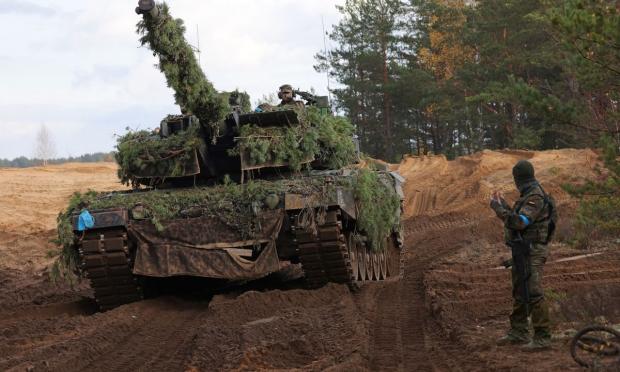The Russian army acquired a Ukrainian Leopard 2 main battle tank, however the tank was badly damaged.
According to new reports, in one of the areas of the front between Ukraine and Russia, a very fierce battle took place. Among others, a Ukrainian Leaoprd 2 battle tank, which is a German-made tank, was involved in the said conflict.
The Ukrainian vehicle tried during the conflict to pass the Russian defensive lines, however it was eventually trapped in an area controlled by the Russians.
Very quickly the Russian army managed to gain control of the tank. With swift efforts he moved it to a safe location for further study.
According to Denis Pushilin, a Russian politician originally from Donbas, Ukraine, Russian tanks moved forward to ensure the safe movement of the German-made tank.
As soon as they realized what the Russians were up to, the Ukrainian forces in the area sent two of their tanks to the scene. According to the Russian politician, the Ukrainian tanks instead of defending against the Russian aggressive actions decided to destroy the Leopard 2 with their own fire!
Apparently, it was more important for the Ukrainian forces that the German tank did not fall into the hands of the Russian army intact than that they themselves destroyed their own vehicle.
Of course, despite Pushilin's statements, there is no other source or material confirming the loss of a Leopard 2 main battle tank of the Ukrainian armed forces. The official Russian Ministry of Defense also did not comment on the matter.
As we have mentioned in another related article, Russia is very interested in getting its hands on a NATO Leopard 2 tank. The tank has been produced for decades by Germany and is one of the main main tanks of the NATO alliance.
The important thing is that these tanks hide key technologies that would, if nothing else, favor the Russian army in one way or another. For example, the multi-layer armor, one of the tank's most interesting features, would help the Russians understand many things about the vehicle.
By studying a sample of the armor, Russian engineers would discover how the Germans make it, while through the process of reverse engineering they might be able to produce similar ones in their own laboratory.
Even if they didn't use it in their own programs, the Russians could learn about its vulnerabilities, powerful features, and detailed composition. Similar procedures can be carried out in other areas of the tank.



